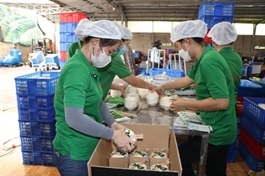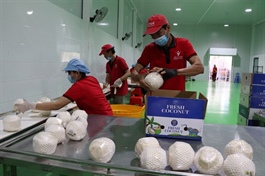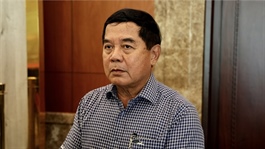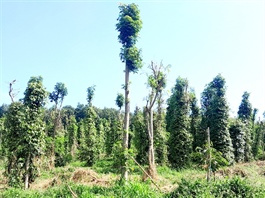Gold market embarks on new rebuilding trajectory
Gold market embarks on new rebuilding trajectory
The State Bank of Vietnam is simultaneously tightening oversight and advancing plans for a national gold exchange, placing banks and businesses to seize opportunities while facing a more transparent and disciplined market.
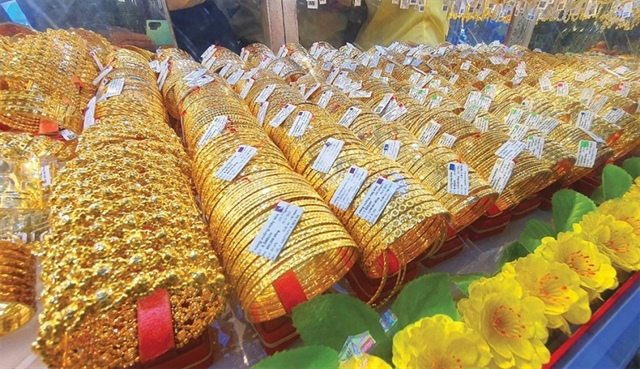
Gold market embarks on new rebuilding trajectory |
On September 9, the State Bank of Vietnam (SBV) convened a meeting with credit institutions and enterprises to implement directives regarding the gold market and to roll out Decree No.232/2025/ND-CP.
Speaking at the meeting, SBV Deputy Governor Pham Quang Dung stated that the central bank is urgently finalising circulars to guide the implementation of Decree 232.
“These will provide detailed instructions on the registration dossiers required from enterprises and commercial banks so that the SBV can grant licences for gold imports and bullion production, ensuring their swift participation in the gold market and bringing Decree 232 into practice,” he added.
Following this announcement, both banks and enterprises expressed readiness to join bullion production.
Dao Cong Thang, acting general director of SJC, said that with Decree 232 taking effect on October 10, the company will immediately apply for licences to import raw gold and produce bullion.
“Once the SBV issues the guiding circular, the company will comply to import raw gold. The production lines are already in place, with a daily capacity of 5,000 taels. As soon as licensing is completed, production can begin immediately,” he added.
Techcombank deputy CEO Pham Quang Thang noted that although the bank had exited the gold business in past years, it has now prepared to re-enter the sector following the issuance of Decree 232.
“Once the guiding circular is issued, we will apply to the SBV for permission to import raw gold and produce bullion. Domestically, we have prepared infrastructure, staffing, equipment, storage, weighing and measuring systems, distribution channels, and service points across our network to provide gold to the public,” said Thang.
He also revealed that Techcombank has identified and selected foreign partners both for sourcing raw gold and for producing Techcombank-branded bullion. “The regulation mandating bank transfers for gold transactions of $800 or more per customer per day is deemed appropriate, as cashless payments are already familiar to the public and will help curb money laundering while boosting market transparency,” he added. “Techcombank has also prepared software systems to manage gold trading, circulation, and imports, enabling customers to access bullion not only at physical branches but also through digital platforms.”
SBV Deputy Governor Dung also highlighted that the SBV is studying international experiences to propose a roadmap for establishing a national gold exchange, or alternatively, allowing gold to be traded on the commodity exchange, or creating a gold trading platform within Vietnam’s international financial centre.
Economist Dr. Nguyen Tri Hieu supported the proposal, stressing the need to launch a national gold exchange soon to address current market distortions, particularly the wide gap between domestic and international gold prices.
“On such a platform, transactions would be carried out electronically in a transparent manner similar to stock exchanges,” said Hieu. “Market participants would need to be licensed, and only legitimate companies and traders would be authorised. Prices and trading data must be continuously updated in real time.”
Assoc. Prof. Dr. Ngo Tri Long, former director of the Institute of Price Research under the Ministry of Finance, emphasised the urgency of establishing a national gold exchange. “This aligns with international practices, creating a centralised, transparent physical gold trading venue that connects with global exchanges, improves price discovery, enhances market credibility, and assists the SBV in managing supply-demand balance and price stability,” said Long.
“China has the Shanghai Gold Exchange, and Thailand has the Thai Gem and Jewellery Traders Association, both of which operate transparently, keeping domestic prices only 1-2 per cent above international benchmarks. That is what Vietnam’s gold market needs,” he added.
Commenting on why domestic prices continue to climb even after the end of bullion monopoly, Dinh Nho Bang, chairman of the Vietnam Gold Business Association, argued that it depends on supply-demand dynamics.
“If demand remains high while supply is constrained, prices will not fall. Conversely, if raw gold imports are liberalised and firms gain access to sources for production, prices can stabilise and decline,” he noted.
Bang also warned of supply-side challenges that “Since Vietnam has no commercial gold mines, bullion production must rely on imports, which in turn depend on quotas, licences, and monetary policy. Removing monopoly alone cannot instantly change the market, but it requires coordinated measures.”
As part of market-stabilisation efforts, on September 9, an inter-agency inspection team launched an investigation into compliance with gold trading regulations. According to Lai Huu Phuoc, chief inspector of the SBV, the initiative aims to promptly detect and strictly sanction violations while ensuring a transparent and stable gold market that complies with laws, thereby supporting monetary policy management and macroeconomic stability.
“For enterprises and credit institutions involved in gold trading, full compliance with inspection requirements is mandatory, including timely, accurate, and truthful information disclosure,” said Phuoc. “For credit institutions in general, particularly those engaged in gold trading, there must be stronger efforts to resolve bad debts and closely monitor credit flows to high-risk sectors, including gold trading.”
- 10:21 16/09/2025






